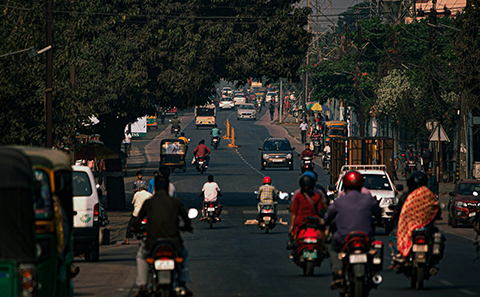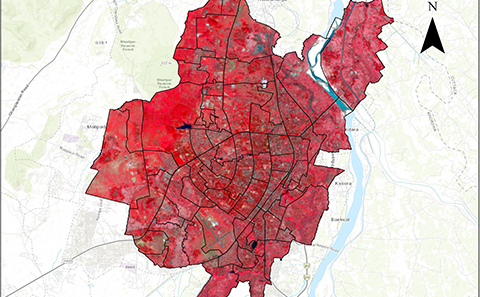Introducing ‘cooling’ green parks to Indian cities

As India grapples once again with unprecedented summer temperatures, a project led by the University of Southampton in the UK is prioritising which areas of a major Indian city need ‘cooling’ green space.
Extreme heat, with temperatures well above 40 degrees Celsius, has already hit parts of India this year. The India Meteorological Department has predicted 10 to 20 days of heatwaves between April and June – more than double the typical summer average of four to eight days.
Introducing green spaces into built-up cities helps to cool the immediate vicinity, alleviate flooding, and supports the wellbeing of residents.
Data experts from Southampton are working with colleagues at the Indian Institute of Technology (IIT) in Bhubaneswar, the capital of the state of Odisha in Eastern India, to identify areas of the city to be prioritised for small urban parks and green infrastructure.
Using information such as the ratio of green to urban space, the density of urban development and socio-economic data, they will rank the 63 administrative areas of the city according to their need for green space. The research team is using data from satellite imagery, local surveys, planning documents, and fieldwork.


Jadu Dash, Professor of Remote Sensing at the University of Southampton, is leading the project. He said: “With rapid urbanisation in places like Bhubaneswar, there has been less attention paid to green infrastructure.
“Working with the Bhubaneswar Municipal Corporation (BMC) and IIT Bhubaneswar, we will identify which areas of the city should be prioritised for developing green infrastructure. For the first time, we will provide information such as urban density at a finer spatial detail. We’re hoping the BMC will use this ranking to prioritise funding for green infrastructure.”
Professor Dash grew up in Odisha and lived in Bhubaneswar until 2000. “Bhubaneswar has massively changed in the last 25 years, with lots of new roads, buildings and urban infrastructure,” he said.
The population of the city is 1.2 million. “With summer temperatures regularly reaching 45 degrees Celsius in Bhubaneswar during April, May and June, introducing measures in the city to help escape the heat will be of huge benefit,” added Professor Dash. “Green spaces will help with urban cooling and encourage people to get out and benefit their wellbeing.”
This project follows previous research by the University of Southampton and the Indian Institute of Technology into the impact of rapid urbanisation on the local climate.
Professor Dash explained: “We began by looking at the impact of urbanisation on causing pockets of areas that are consistently hotter than the surrounding areas, and we found that urbanisation has led to other issues as well as these ‘heat islands’. It’s caused problems with flooding and waterlogging due to the removal of natural drainage and, in turn, the spread of dengue fever in the rainy season.”
Having identified areas at risk of urban flooding, the research team is also using this information to inform where should be prioritised for green space.
The above satellite images were compiled using data from NASA’s Landsat Satellite Sensor, showing vegetation in red and urban areas in grey. Images produced by Unis Lebbie, Research Technician in Remote Sensing at the University of Southampton.